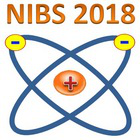Speaker
Mr
Yasuaki HABA
(Nagoya University / National Institute for Fusion Science)
Description
Development of negative ion sources and development of the accelerator of negative ion beams are of crucial importance for nuclear fusion research. In order to evaluate beam optics, and to investigate the characteristics of meniscus formed between negative ion beam region and plasma region, detaild measurement of beam property is required. Therefore, we have developed a new beamlet monitor system to evaluate negative ion beam properties in experiments.
The beamlet monitor system for negative ion beams has four diagnostics in one hexagonal box, which can be moved remotely in the vertical direction (y-direction in the experiment) by a linear drive system. One diagnostic is fast beamlet monitor (FBM) with 32-channel electrode array (8x4) for beam current profile measurement. The time resolution is up to 50 MHz for electrical circuit and data aquisition, and the space resolution is 4.1 mm in the horizontal (x-direction) and 4.9 mm in the vertical. The other diagnostics are pepper pot-type phase space structure analyzers (PPSA). The copper plate with two-dimensional pinhole array (18x14) and kapton foil are utilized for detecting beam burn pattern, which shows the information of phase space structure.
The hexagonal box is installed in NIFS neutral beam test stand (NIFS-NBTS). The detector can be switched by rotating the box on a shot-by-shot basis. Therefore, the beam information from different diagnostics are obtained with almost the same beam condition.
The demonstrations of beam measurement with the beam monitor system were performed. In the case of FBM, it was confirmed that the secondary electron current can be suppressed with the application of DC bias of +70 V to the electrodes, and the absolute value of the beam current was obtained. The two-dimensional beam profile was also obtained by detailed scan of the detector position with the linear drive. In the case of PPSA, the clear beam burn pattern was obtained on the kapton foil, and the phase space structure was constructed by the burn pattern.
In the symposium, the details of the beamlet monitor system and the initial results in the experiments will be presented, and the comparison of the two dimensional beam-let profiles obtained by FMB and PPSA will be discussed.
Primary author
Mr
Yasuaki HABA
(Nagoya University / National Institute for Fusion Science)
Co-authors
Dr
Haruhisa NAKANO
(National Institute for Fusion Science)
Dr
Katsunori IKEDA
(National Institute for Fusion Science)
Prof.
Katsuyoshi TSUMORI
(National Institute for Fusion Science)
Dr
Kenichi Nagaoka
(National Institute for Fusion Science)
Prof.
Masaki OSAKABE
(National Institute for Fusion Science)
Dr
Masashi Kisaki
(National Institute for Fusion Science)
Dr
Shinji YOSHIMURA
(National Institute for Fusion Science)
Dr
Shuji KAMIO
(National Institute for Fusion Science)
Dr
Yutaka FUJIWARA
(National Institute for Fusion Science)

